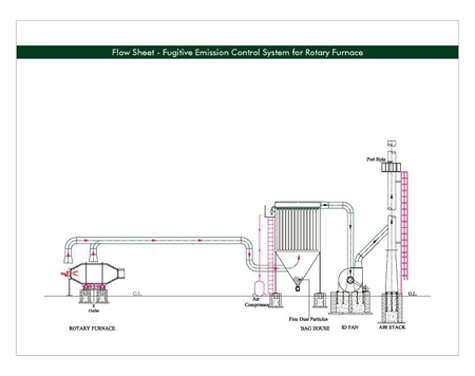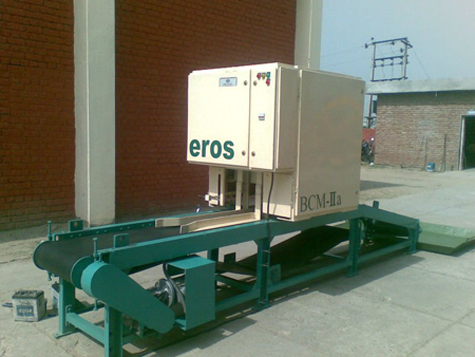Effluent Treatment Plant For Acid Neutalization Cap 2400 Litre - India
price: contact company for price
Effluent Treatment Plant for Lead Recycling Units
About Effluent Treatment Plant
When Lead Acid Batteries are replaced, they contain spent acid with some lead dissolved in it.
These used batteries are sold in the open market to lead recyclers where they are drained before being put into the process of recycling.
Further in many units, plastic containers of the batteries, after cutting and opening, are washed to remove any lead in them.
The drained acid alongwith any washing effluent of the plastic scrap comprises of the effluent that needs treatment at the Effluent Treatment Plant(ETP).
This ETP is also commonly called Acid Neutralisation System.
If unchecked, these untreated effluent will seep in to land and would lead to soil contamination, pollution in ground water table and their runoff may also lead to pollution of nearby eater sources.
Hence, their proper treatment before disposal is necessary.
Description of Process
Effluent from such used batteries mainly consists of sulphates and sulphides of lead, small quantity of lead and diluted sulphuric acid.
Futther effluent from container washing which mainly contains small quantity of lead is also fed to the ETP.
This effluent has low pH values.
pH balancing agent (caustic or lime in this case) is added to adjust the pH and also for coagulation.
The effluent is then mixed for Flocculation.
The floccs so formed are setttled and dewatered on a Sludge Bed(or through Filter Press).
Treated effluent after this is further polished using filters.
While treated water may be disposed or used as permitted by law, sludge is recharged into furnaces for recycling and reclamation of lead.
Characteristics of Effluent before and after Treatment
Parameter Before Treatment Approved Range
pH 3.0 - 4.0 6.5 - 8.5
Suspended Solids 600 - 800 mg l 50 mg/l
Lead 30 - 40 mg l 0.1 mg/l
(However, where only spent acid is fed into the ETP, sludge generated is in the form of sodium sulphate or calcium sulphate with lesser quantities of lead will be dewatered and stored as hazardous waste instead.
)
Description of Plant
An Effluent Treatment Plant for lead recycling units can be designed as a Batch Type unit or as a Continuous Unit.
This mainly depends on the quantity of effluent to be handled.
While smaller quantities can be treated in batches, quantities above 10 kl/day are to be treated in Continuous Operating Units.
Batch Type Unit
Continuous Treatment Unit
Effluent from used batteries and from container washing is stored in a receiving tank.
It is then lifted with the help of an acid proof pump and fed to a Clari-flocculator.
Required dosing of alkaline additive is mixed in fresh water in a separate dosing tank and also fed to this Clari-flocculator.
The Clari-flocculator is a PVC lined cylindrical tank in mild steel construction.
It has an electro-mechanized stirrer for mixing of the effluent with dosing chemical.
It has conical bottom with drain valve.
Effluent is fed from the top and after requisite dosing, is agitated and mixed.
This leads to neutralization, coagulation and thereafter flocculation.
Once mixing is stopped and floccs are formed they are allowed to settle at the bottom of the conical tank.
After some time, treated effluent is drained from the side of the tank.
Sludge is disposed through the bottom of the tank for dewatering to either Sludge Beds or to Filter Press.
Treated effluent is passed through a series of Polishing Filters (a set of Pressure Sand Filter & Activated Carbon Filter) before disposal.
This improves upon the characteristics of the treated effluent.
This is called a Batch type unit as the Clari-flocculator is designed to process effluent of a particular capacity in one operation cycle and no more.
After it is completely treated and drained, a second batch of effluent can be treated.
Continuous Treatment Units
In a Continuous type unit, effluent is consistently fed into the system and is treated continually.
Hence, it is suggested for treatment where higher capacities of effluent is involved.
Effluent from used batteries and from container washing is stored in a receiving tank.
It is then lifted with the help of an acid proof pump and fed to a Flocculator.
Required dosing of alkaline additive is mixed in fresh water in a separate dosing tank and also fed to this Flocculator.
The Flocculator is a PVC lined tank in mild steel construction.
It has an electro-mechanized stirrer for mixing of the effluent with dosing chemical.
It has conical bottom with drain valve.
Effluent is fed from the top and after requisite dosing, is agitated and mixed.
This leads to neutralization, coagulation and thereafter flocculation.
Effluent with floccs is passed to a Tube Settler.
It is a PVC lined tank in mild steel construction.
Hexagonal PVC settling media is fitted in this tank.
Effluent is allowed to settle here and as a result, the floccs settle on the PVC media provided and are passed to the conical bottom of the settler.
Sludge is disposed through the bottom of the tank for dewatering to either Sludge Beds or to Filter Press.
Company Contact:
- Posted By: Eros Envirotech Pvt. Ltd.
- Phone: 911612542109
- Address: 109-110, Savitri Complex-1, Dada Motors Building, G.T.Road, India
- Email:

- Website: https://www.erosenvirotech.com
Published date: June 6, 2013
- Business Description: Eros Envirotech Pvt.
Ltd. is one of the leading Manufacturer and
Exporters of Lead Acid Battery Recycling Unit, Air and Water Pollution
Control System, Pots for Refining and Alloying, Ball mills for Lead
Oxide accepted all over worldwide.
The company from last 2 decade is ISO
9001: 2008 certified.
Related listings
-
 Fugitive Emission Control Device For Rotary FurnaceScrap Metal - Eros Envirotech Pvt. Ltd. - India - June 6, 2013 - contact company for price
Fugitive Emission Control Device For Rotary FurnaceScrap Metal - Eros Envirotech Pvt. Ltd. - India - June 6, 2013 - contact company for priceFugitive Emissions Control Device Smelting of lead in furnaces involve stages or parts where though pollution is generated, it is not handled by the main Air Pollution Control System, like charging of Rotary Furnace when it is red hot or tapping of l...
-
 Battery Cutting MachineScrap Metal - Eros Envirotech Pvt. Ltd. - India - June 6, 2013 - contact company for price
Battery Cutting MachineScrap Metal - Eros Envirotech Pvt. Ltd. - India - June 6, 2013 - contact company for priceBattery Cutting Machine BATTERY CUTTING MACHINE SEMI AUTOMATIC MODEL: BCM II a TECHNICAL SPECIFICATIONS : Main Parts Conveyor with Guide Rails, Cutter House and Control Panel Conveyor Construc tion MS Structure Enamel Coated Dimensions 3200 mm L (Hor...
-
 Jumbo Ingot Moulds Cap 500 KgScrap Metal - Eros Envirotech Pvt. Ltd. - India - June 6, 2013 - contact company for price
Jumbo Ingot Moulds Cap 500 KgScrap Metal - Eros Envirotech Pvt. Ltd. - India - June 6, 2013 - contact company for priceJumbo Ingot Mould Jumbo Ingot Moulds are collection trolleys used for collecting molten lead from Rotary Furnaces. They can be of varying capacities, ranging from 300 Kg. to 800 Kg. The most prevalent of the same is 500 Kg. Ingot Mould. Due to higher...
Safe Trade Tips
- Ask for business references and check them
- Use a payment method that offers better protection for all such as Letters of credit and verified professional escrow services. Avoid payments in advance such as money transfers
- Verify their business via their local Chamber of Commerce
- Search the internet using their website address, their business name, their phone and fax numbers, and their email addresses to see if you can find any feedback about them.
- Get to know more about scams and fraud to avoid: Internet Crime Complaint Center - Consumer Financial Protection Bureau
- This site is never involved in any transaction, and does not handle payments, shipping, guarantee transactions, provide escrow services, or offer "buyer protection" or "seller certification"
